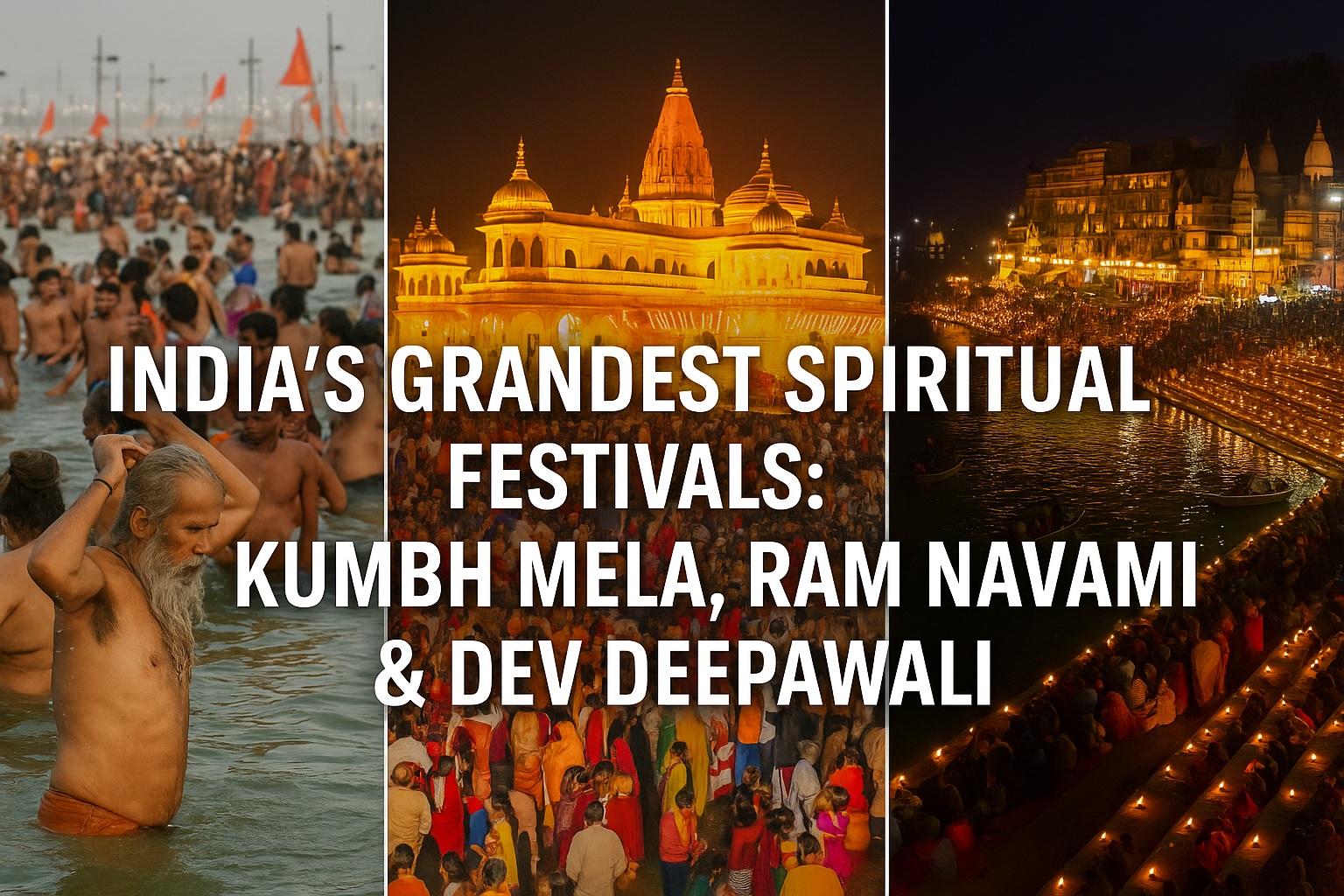
India isn’t just a country; it’s a living, breathing spiritual experience. Nowhere is this more evident than in its religious festivals — where centuries of devotion, tradition, and community come alive. Among hundreds of festivals celebrated across the land, three truly stand out, not just for their scale, but for what they represent: Kumbh Mela, Ram Navami in Ayodhya, and Dev Deepawali in Varanasi.
Whether you're a spiritual seeker, culture lover, or just someone craving a transformative travel experience, these festivals offer more than just rituals — they offer stories, energy, and something indescribable that stays with you long after the trip ends.
Imagine millions of people, from every corner of India (and the world), gathered on the banks of a holy river — all for a single dip believed to cleanse lifetimes of karma. That’s Kumbh Mela.
Held in rotation between Prayagraj, Haridwar, Nashik, and Ujjain, this festival happens every 12 years (Maha Kumbh) and every 6 years (Ardh Kumbh). The sheer scale is staggering — it’s often called the largest peaceful gathering on Earth.
I was there during the last Ardh Kumbh in Prayagraj, and no photo or article does justice to the feeling. Chanting sadhus, smoke from havans, endless tents, and the chill of the Ganga at dawn — it’s all surreal.
🧭 Pro tip: Plan months ahead. The best time to visit is on the main shahi snan days. Book your stay early, whether it’s a simple tent or a spiritual luxury camp.
In recent years, Ayodhya has become a symbol of renewal, faith, and pride for millions. And Ram Navami, the celebration of Lord Ram’s birth, has taken on a whole new meaning — especially after the opening of the grand Ram Mandir in 2024.
Ayodhya lights up with rath yatras, bhajans, and spiritual fervor. I remember standing in the evening aarti at the Sarayu River, watching thousands of diyas float downstream. The silence and the chants together created something I can’t explain — maybe peace, maybe awe.
Ayodhya isn’t just a place now; it’s an experience. The kind that gives you goosebumps.
If Diwali is India’s Festival of Lights, Dev Deepawali in Varanasi is its spiritual twin — only more mystical, more serene.
Fifteen days after Diwali, the ghats of Kashi turn golden. Over a million diyas are lit on the steps of the Ganga. There’s a sense of magic in the air, and Varanasi — already India’s spiritual capital — becomes something even more ancient and alive.
People gather for the grand Ganga Aarti, and boat rides during this time are nothing short of cinematic. You’ll see monks meditating, tourists filming, kids lighting candles, and chants echoing across the water.
You don’t have to be deeply religious to appreciate these events. These festivals are living traditions — they tell you who we are as a people, what we value, and how our past and present continue to walk hand in hand.
They’re also huge tourism magnets. People come not just for the rituals, but for the atmosphere, the culture, the food, and the stories. And even when the festival dates aren’t near, people are always searching for details — how to reach, when it’s happening, what to expect.
If you ever get the chance to attend one of these festivals, don’t hesitate. They are overwhelming, yes — but also deeply grounding. You might go as a tourist, but you’ll leave feeling like something inside you shifted.
Online
If you’d like to contact me, reach out on social media or drop me an email below – I’ll get back to you!
inkempire107@gmail.com
© Inketu. All Rights Reserved. Design by HTML Codex